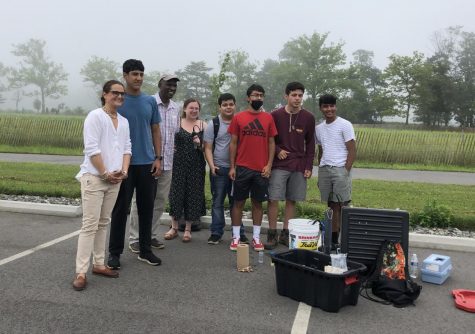Brentwood’s MIT InvenTeam
October 12, 2021
The Brentwood Lemelson MIT InvenTeam has recently submitted their final application for the L-MIT $10,000 grant, a STEM based competition for pursuing young inventors. The InvenTeam consists of seven members in different sections: engineering/design, research, and finance/engagement. The project pitched to the annual Lemelson-MIT Competition was a Multi Unit Sensor for Climate and Ecological monitoring (M.U.S.C.L.E).
The M.U.S.C.L.E is a cost effective, user friendly, water monitoring system that can be easily accessible and used by the general public. Its job is to measure environmental conditions: temperature, pH levels, salinity, and a muscle gaping sensor that the team is developing. Our idea revolves around salt marshes, creating efficiency to the Atlantic coast Geukensia demissa (ribbed mussels).

Salt marshes are coastal wetlands which yield important ecological services to neighboring coastal ecosystems like, preventing wave energy/storm surges. They are vital for protecting shorelines, acting as a natural barrier from preventing erosion, and filtering runoff from excess nutrients which cause nitrogen loading. However, due to climate change driven sea level rise, and eutrophication, salt marshes are degrading.
To restrict progressive destruction from our salt marshes, monitoring environmental factors can help us understand the marsh more and create faster alternatives to preventing environmental damage. The invention prioritizes Arduino board in a custom 3D printed waterproof-casing; it utilizes ribbed mussels to track the changing environment through monitoring the gape of the shell, or the angle of how much the mussel opens.
Prior research was done in the lab, determining that mussels gape less when stressed, caused by lack of food, nearby predators, and certain environmental factors or change. Ribbed mussel biosensor will indicate negative or positive changes in the environment. The team aims to target an audience of people who want to contribute in our community as well as pursue environmental scientists that lack equipment.


